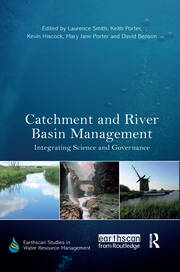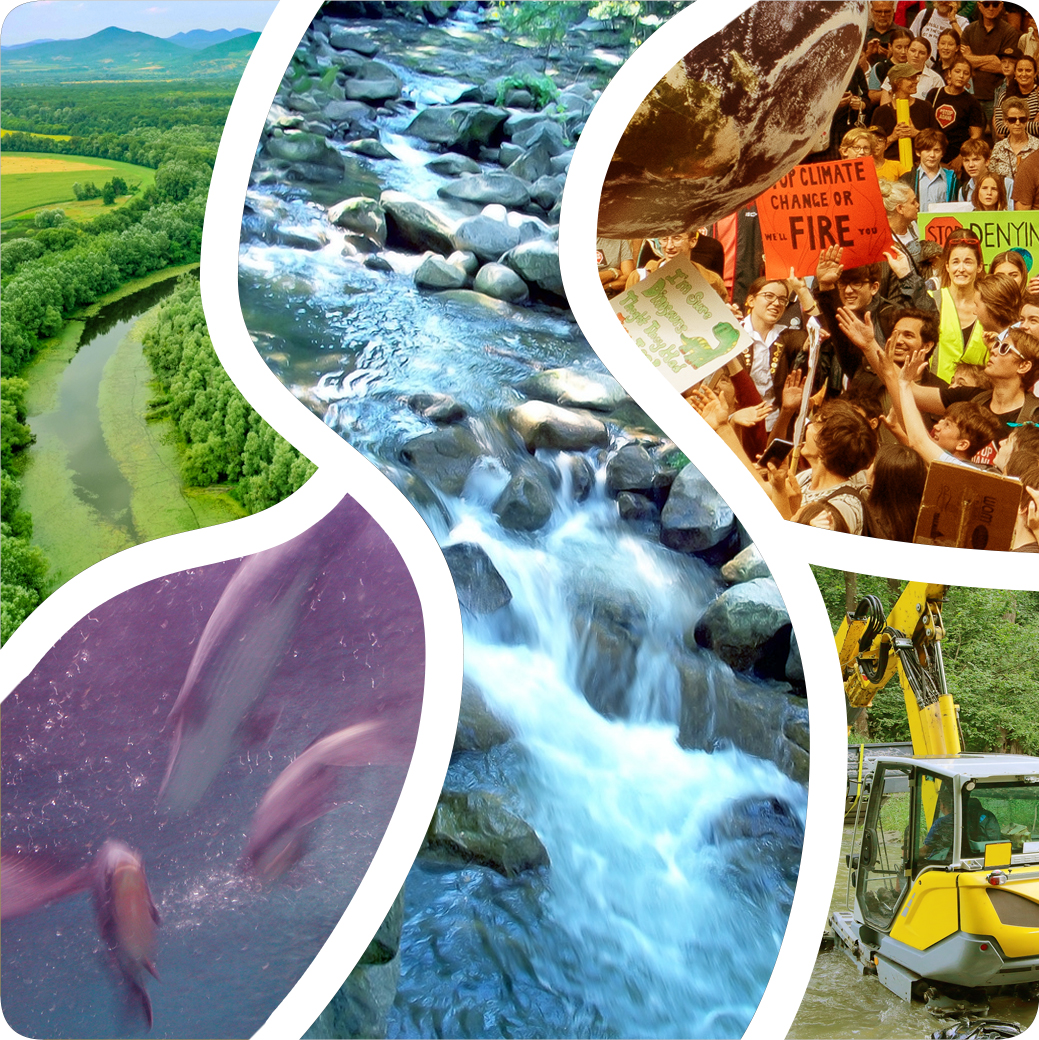Mark Horton
Chief Executive, Ballinderry Rivers Trust
All Ireland Director, The Rivers Trust
NGO & Civil Society
EC / PolicyMakers / Funders / Government

My Projects
 https://catchmentbasedapproach.org/
https://catchmentbasedapproach.org/
- Key project facts
- What impact did these projects have on biodiversity, if any?
- What work challenges did you face and what approach did you take to solve them?
- What lessons learned are transferable to other places/projects?
- What is your biggest barrier and what are you trying to do about it?
My Focus and Approach
- Lessons Learnt - Some recommendations for others?
- What’s most important:
It is important to recognise that sustainable environmental outcomes require the meaningful engagement of the people who live, work and play in that environment. Allowing project time to engage effectively with local communities who live and work in the environment in question, be that a river catchment, a peatland, a forest or a coastal zone. Effective community engagement takes time, dedication, and resources; it must be sustained and build momentum. Short term project funding or project outcomes that are simply driven by environmental gain alone do not facilitate this type of process – and yet good community engagement and true empowerment can provide greater environmental benefit and a more sustainable route to delivering long-term environmental outcomes
- Do this, not that:
Do plan for, and secure resources for, multi-year projects, recognising that people are just as important a resources in environmental improvement projects as materials and capital costs. Good community engagement can affect behavioral change that bring long term environmental gain but this takes time and resources.
Do not underestimate how long meaningful community engagement can take or undervalue the power and validity of local knowledge and expertise. Often the local community know where the environmental pressures ae coming form and also have ideas on how to stop them, or reduce their impact. These may not be ‘text-book’ solutions but innovation is the key to success. - Always start by:
Understanding how your local community is made up, how people use the landscape and what their expectations are of the environment around them. This will help to identify conflicts in perceptions and interactions, challenges in bringing people together and also opportunities for community collaboration. Identifying the WIN WIN scenarios for as many people as possible is the key to success
- What to do when things get difficult…:
Keep reminding yourself that little steps are still progress. Stay focused on what is most important and most achievable, but don’t forget about the quick wins that can give everyone a real boost when they see that things are ‘starting to happen’
- 5 simple steps to:
- Stakeholder Mapping – understand your community and how it interacts with the environment
- Help people to see their place and relevance in the local environment - Bring the environment to life for them by highlighting how it links to their work, recreation, poetry, music, food, culture, art and so on – allow people to connect with their environment through their own interest.
- Educate – Provide information about the local environment that is not readily available, but do it in a way that is easily understandable to everyone, and in a variety of formats e.g. events, walking talks, posters, newsletters, short films, peer-to-peer support.
- Create a shared vision – Establish a shared vision for how the community, scientist and specialist want to the environment to be, and how everyone will interact and engage with it.
- Empowerment – Having brought people along on this journey above, get local people to champion actions that are required to achieve the shared vision, provide people with the knowledge and tools to gather data, assess the state of their environment and become Citizen Scientists, and connect the community with the decision makers so that the futuer management of the environment is sustainable and mandated by all
- What’s most important:
- The biggest barrier and what I am trying to do about it:
The lack of available resources and support for local communities to become empowered to take action presents the biggest barrier I often encounter. To overcome this we facilities peer-to-peer learning and support, capitalising on the wealth of knowledge and expertise that already exists within our communities and between rivers trusts. We also identify sources of funding that may not be accessible to individual groups but which can be applied for at the regional/national scale and disseminate this to groups and rivers trust on the ground, so they can focus on getting on with the work in hand
My Journey
- My journey:
Having grown up in the industrial heartland of England’s West Midlands, where the countryside was somewhere to be visited at the weekends, I left home to study Geography at Aberystwyth University in rural west Wales. Returning back to the West Midlands for a year I working for the Department for Environment, Food & Rural Affairs (DEFRA), before moving to Leeds, in the north of England, where is studied river catchment management at the University of Leeds. From here I relocated to Northern Ireland where my knowledge of rivers and catchment management was interwoven with community engagement and grass-roots conservation action for freshwater species and habitats. I have worked on and manged project for freshwater pearl mussel and white-clawed crayfish conservation, water quality improvement and protection and community engagement and planning in ecosystem function restoration at a catchment scale. During this time I have overseen the development of a community-led river conservation association into an internationally recognised charity – Ballinderry Rivers Trust, part of The Rivers Trust movement in the UK and Ireland. As well as being Chief Executive of Ballinderry Rivers Trust I am also the All-Ireland Director of The Rivers Trust, the umbrella body for similar charities across the UK and Ireland, helping new rivers trusts form to deliver grass-roots conservation and community engagement in their own catchment areas. - My Education:
- BSc(Hons) Geography – Aberystwyth University, Wales
- MSc Catchment Dynamics & Management – University of Leeds, England
- The Big Change:
There are now 21 rivers trusts and association on the island of Ireland, all established by communities of people who have been empowered to make the change they want to see in their local rivers and waterways - Favourite part of the work I do:
Empowering communities to make real and positive environmental change is my favourite part of what I do! I love meeting people who have a concern for their local rivers and environment and a passion to do something about it – but don’t necessarily know how, or sometimes don’t know they can! I find it immensely rewarding to see communities taking ownership of their local waterways and applying their local knowledge to solve problems the environment is facing.
Brief Overview
Interview
Part 1
Part 2
Key Topics:
Key Topics
These relate to specific topics (e.g. technical solutions; restoration activities etc.) addressed within the showcase materials.
- Community engagement
- Grass roots conservation
- Freshwater pearl mussel; white clawed crayfish
- Catchment scale planning
- Community group funding
Prone2Success Factors Demonstrated:
Prone2Success Factors Demonstrated
These are the Prone2Success checklist factors which are highlighted within this showcase. More information on the Prone2Success checklist can be found here.
- Measureable goals: Ecosystem services
- Stakeholder engagement
- Community engagement
- Stakeholder understanding and education
- Whole project finance
- Adaptive management
NRL Restoration Categories:
NRL Restoration Categories
These are the restoration categories (listed under Annex VII of the European Nature Restoration Law (NRL) which are relevant to this showcase.
- [19] Stop or reduce the use of chemical pesticides / fertilisers
- [8] Restore natural sedimentation
Was this information useful?
No
Thank you for submitting feedback.
Click here to share your thoughts
Resources
 Catchment and River Basin Management: Integrating Science and Governance edited by Laurence Smith, Keith Porter, Kevin Hiscock, Mary Jane Porter, David Benson, ISBN: 978-1-84971-304-7
Catchment and River Basin Management: Integrating Science and Governance edited by Laurence Smith, Keith Porter, Kevin Hiscock, Mary Jane Porter, David Benson, ISBN: 978-1-84971-304-7 https://catchmentbasedapproach.org/
https://catchmentbasedapproach.org/
Acknowledgements & Links
This material was provided by: Mark Horton, For more information, see


